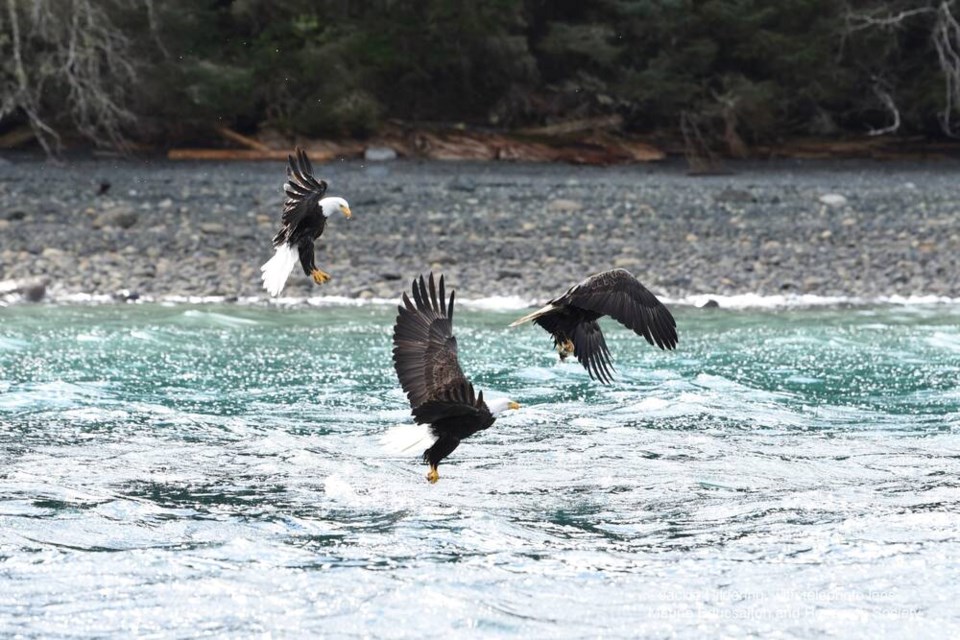A herring spawn never before recorded off Port McNeill is delighting residents as it attracts sea lions, bald eagles and other birds feasting on the fish.
Herring sperm, known as milt, is turning the water turquoise along a stretch of Port McNeill’s shore between the ferry terminal and Hyde Creek to the east.
“There’s incredible numbers of birds of many species,” said Jackie Hildering, communications and education director for the Marine Education and Research Society, based in Port McNeill.
“Eagles are coming down and grabbing talons full of the herring. Even from our houses, we can hear the growling and the barking, occasionally, of sea lions.”
The Department of Fisheries and Oceans has no record of a spawn occurring in the location since it began keeping records in 1950, said Jaclyn Cleary, a DFO biologist with expertise in herring.
The main herring spawn in the Strait of Georgia takes place each spring between Nanoose Bay and Comox, including Denman and Hornby islands, but there are records of “peripheral” spawns occurring closer to Port McNeill, around Port Hardy, Malcolm Island and Hope Island, Cleary said.
While it has not been recorded by DFO before, Cleary said nothing about herring spawns surprises her because it’s different every year. The presence of this spawn doesn’t necessarily say anything about the overall herring population on the coast, she said. Instead, she sees it as a reminder of how unpredictable spawn can be.
“But I find it exciting to see spawn happen in a community right along their beach,” she said, as it gives residents front-row seats to a wildlife show of sea lions, seals, humpback whales, bird species and fish.
During low tide, the eggs can be visible and, at about a week old, “these two little dark eyes” can be seen inside the clear eggs, Cleary said.
The eggs are a source of nutrients for invertebrates in the intertidal zone.
The “hearty eggs” can handle a bit of attention by observers, but Cleary reminded the public not to remove them.
Teams of divers in the core spawning area from Nanoose to Comox are counting eggs and using equations to estimate the size of the spawn. Estimates will be available around the end of June.
DFO engages local First Nations to measure the spawn and is setting up a survey to determine the size of the Port McNeill spawn.
Ernest Alfred, an elected leader of the ‘Namgis First Nation, believes the new spawn is the result of the closure of fish farms in the Broughton Archipelago. He said his nation’s history shows herring spawn in the area decades ago.
“The life is starting to return here,” he said.
In Greater Victoria, some have also pointed to changes in herring behaviour as indicators that populations might be rebounding.
Populations in the region have declined significantly, but a spawn off Esquimalt Harbour last year — the first in more than 25 years — and large numbers of herring that brought hundreds of seals and sea lions to the Trial Islands off Oak Bay last month have some observers hoping the fish are returning.
The Songhees Nation’s marine team is preparing for the potential return of spawning herring this weekend, using traditional methods to welcome herring into the Gorge Waterway.
The team is placing weighted floats with branches attached to provide a surface for herring to spawn onto and find protection from predators.
Songhees members are invited to join the event in Portage Inlet Linear Park on Thursday from 10 a.m. to noon to learn more about herring and roe harvesting in Lekwungen territory.
>>> To comment on this article, write a letter to the editor: [email protected]
Note to readers: This story has been updated. Only Songhees members are invited to the event on Thursday.




